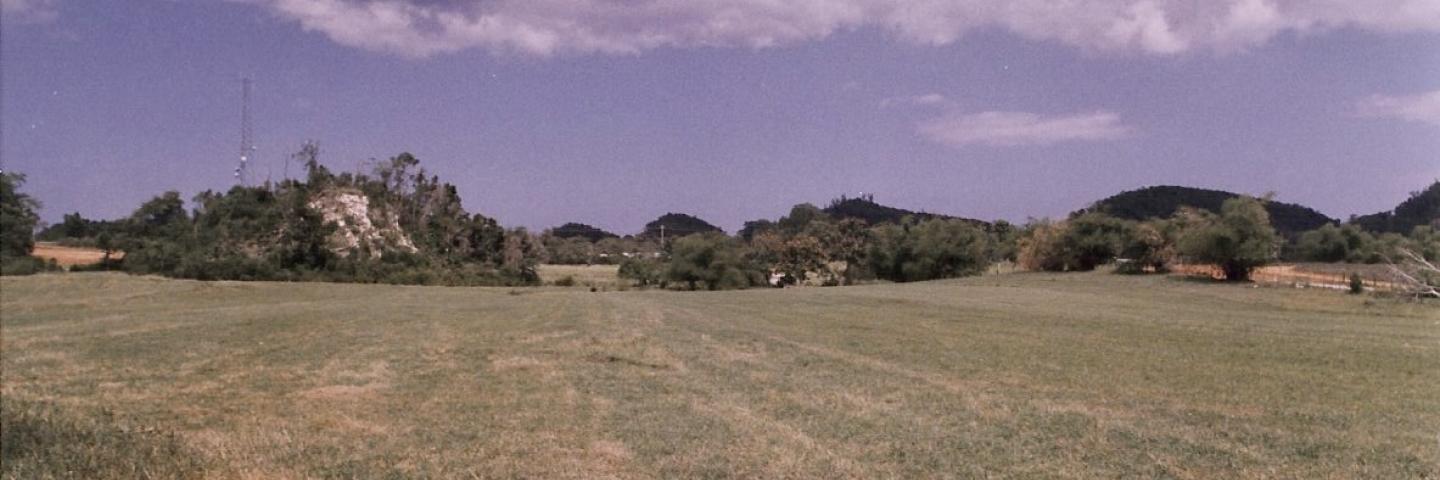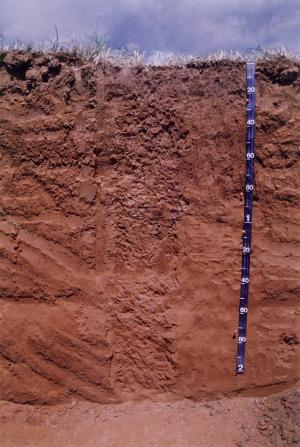
Bayamon Soil Description

Bayamon soils are interspersed between limestone hills (haystacks) along northern Puerto Rico. They are used for sugarcane, pineapples, a wide variety of food crops, pasture, and hayland.
A typical Bayamon soil profile consists of a 20 cm topsoil layer of dark reddish brown clay and a weak red clay subsoil layer to a depth of 2 meters or more.
The Bayamon soils formed in highly weathered, clayey marine sediments. These soils have low to medium fertility and are strongly to extremely acidic throughout the profile. Crops respond well to applications of lime and fertilizer.
When Christopher Columbus discovered the island of Puerto Rico on his second voyage (1493), the inhabitants were the Tainos Indians. The word "Bayamon" was derived from a local Indian chief named Bahamon. Bayamon is also the name of one of Puerto Rico's main cities and a river.
Setting: Bayamon soils are predominantly gently sloping soils interspersed among limestone hills (haystacks). They formed in highly weathered, clayey marine sediments. The climate is humid tropical. Slopes range from 2 to 12 percent. The mean annual precipitation is about 65 inches and the mean annual temperature is about 78 degrees F. See map of soil series extent.
Soil Family Classification
Very-fine, kaolinitic, isohyperthermic Typic Hapludox
Bayamon soils are in the Oxisols soil order. The stability of the landform enhances the weathering processes, leaching of bases and weatherable minerals, and the accumulation of more stable minerals and sesquioxides. The term "very-fine" indicates that the subsoil has 60 percent or more (by weight) clay. The term "kaolinitic" indicates more than 50 percent-(by weight) kaolinite clay in the less than 0.002 mm fraction. The term "isohyperthermic" refers to an average annual soil temperature of 22C (72F) or higher and an annual fluctuation of less than 5 degrees (C) at a depth of 50 cm.

